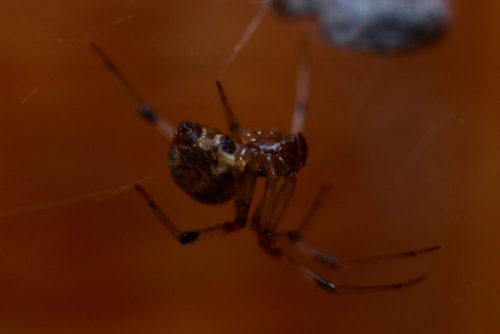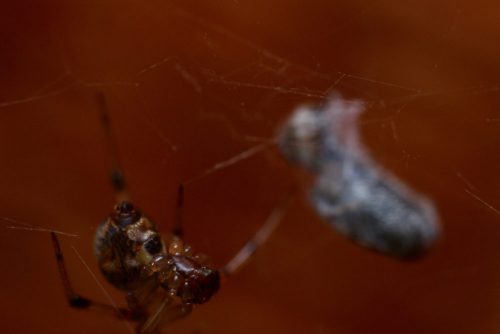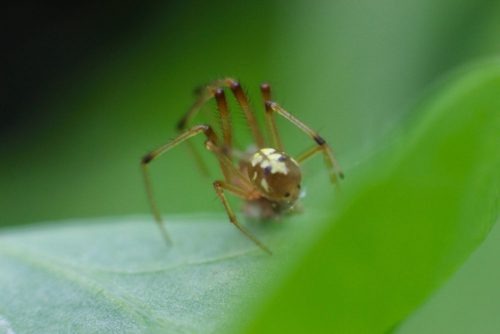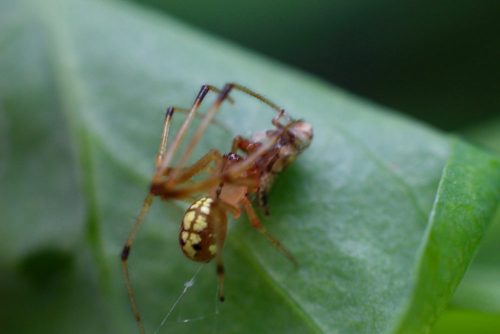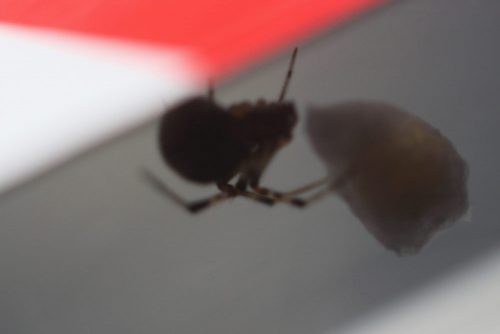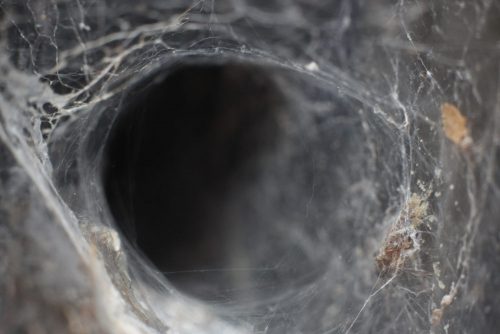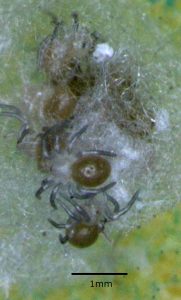Today I’ve been prowling around, acting suspicious around my house, still trying to work out this macrophotography thing. I just now found a lovely Parasteatoda doing her business in a nook on the side of my house, so I had to snap a picture. My house has rather orange siding, which accounts for the warm tones of the background.
I caught her in the act of wrapping up her prey. The flies are everywhere today…eat more, ma’am. Many more.
Then I noticed in a little cranny another treasure — she has an egg sac nearby. Sorry to say, I’m going to steal it. More embryos for the development lab!

